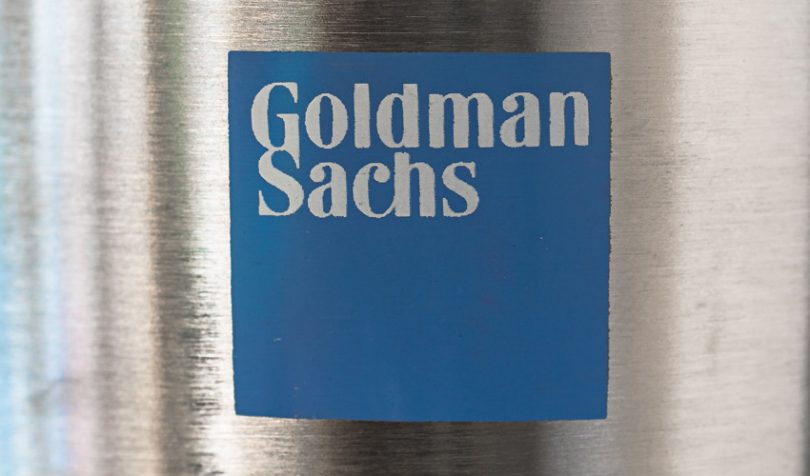Late last week, CNBC revealed that Goldman Sachs’ Mathew McDermott became Global Head of Digital Assets back in June. He is joined by fellow London-based executive Oli Harris, formerly JP Morgan Head of Digital Assets Strategy & Quorum. Harris confirmed the move on LinkedIn. CNBC also revealed that Goldman Sachs is considering issuing its own settlement coin.
“We are exploring the commercial viability of creating our own fiat digital token, but it’s early days,” McDermott told CNBC. This is likely to be similar to the JPM Coin, where the purpose is primarily to use it for settlement. A year ago, Goldman’s CEO hinted at such a coin.
And on the future of finance, McDermott said: “In the next five to 10 years, you could see a financial system where all assets and liabilities are native to a blockchain, with all transactions natively happening on chain.”
In September last year, McDermott participated in a panel discussion at the SIBOS banking conference, which gives a view into his thinking about the role of blockchain, interoperability, and technology choices. However, much may have evolved in the intervening ten months.
A Goldman Coin, a universal token, or both?
At SIBOS, McDermott spoke quite positively about Fnality’s Utility Settlement Coin (USC), a wholesale currency backed by numerous major banks, but neither JP Morgan nor Goldman Sachs.
Talking about the USC at SIBOS in the context of banking treasury management, Goldman’s McDermott said: “There’s a lot of repositioning of cash that goes on as you look at your funding obligations throughout the day. So actually having a universal coin that’s proficient on these ledgers, I think you can reduce the amount of prefunding that you do by a material size.” However, he referred to this as a “stage two” solution, perhaps recognizing the hurdle required to get a green light from a central bank for such a universal token.
Collateral management
The executive was previously Goldman’s Global Head of Cross Asset Financing. As part of that role, Goldman Sachs joined blockchain platform HQLAX. Banks keep a certain proportion of their balance sheets in high-quality liquid assets (HQLA) and frequently trade them with other banks, collateral swaps. But there’s a delay in transferring custody, adding time and friction.
Instead, in conjunction with the Deutsche Böerse, HQLAX enables instant atomic settlement through a digital collateral registry, while the collateral remains with the original custodian. JP Morgan is one of the tri-party custodians working with the platform.
“Having something that can atomically settle and remove some element of the performance risk has huge value for the broader system,” commented McDermott as SIBOS.
But he also likes the flexibility. He noted that Goldman has assets that don’t fit well with the tri-party custodial system, such as emerging market equities. “Having the ability to use this technology to bring them into the ledger and finance them in an optimal and secure way will bring a huge amount of value. And I think for most institutions looking to optimize their liquidity, that’s something that they’ll focus on,” said McDermott.
For now, the emphasis of HQLAX is the European market, although its ambitions are global. But both Goldman and JP Morgan are major participants in the U.S. repo market. At the end of last year, the Financial Times reported that the banks were adopting strategies to reduce capital requirements and ease liquidity in the U.S. repo market. For example, in the case of JP Morgan, by using a clearinghouse to net off transactions. But that’s a role that could be performed by a DLT platform.
Hence when McDermott told CNBC “in securities finance and repo, if you look at those markets, they’re ripe for standardization,” he was probably talking about HQLAX. But it’s not inconceivable that the two banks might explore the U.S. repo market together.
Interoperability – a preference for single ledger
McDermott is keen on interoperability, but he prefers to see all the banks on the same platform, certainly in the case of collateral. “This is only as successful as the number of participants on a particular ledger. The Utility Settlement Coin has been testing their technology and now it works with Corda. So we do see there’s interoperability I think across the platforms. But I think you get the most frictionless and efficient ledger or platform if you have all the participants on one. “
He reiterated: “Yes it can be interoperable. My personal view is I think it’s more attractive to have one utility platform.”
Which technology?
While McDermott’s personal experience is more with R3’s Corda through participation in HQLAX, the company has experience in most of the main blockchain technologies. JP Morgan and Goldman Sachs initially participated in R3, but both dropped out to pursue their own avenues.
Goldman is a member of CLSNet, the blockchain foreign exchange netting solution based on Hyperledger Fabric.
JP Morgan’s Oli Harris is joining Goldman, and he was previously strategically responsible for JP Morgan’s Quorum flavor of Ethereum. Does Harris bring digital asset strategy experience, JPM Coin experience, or is it a signal that Goldman might adopt Quorum? CNBC said that McDermott hinted at a potential collaboration with JP Morgan.
Plus, there’s Goldman’s investment in Axoni, which like Quorum and Fnality’s utility payments platform, is also based on Ethereum. Six months ago, Goldman Sachs and Citi conducted the first live trade on the Axoni DLT equity swap platform.
And at SIBOS, McDermott was neutral on technology. “We have seen I guess a number of different flavors of this technology, but I think fundamentally the value proposition is quite similar,” he said.






